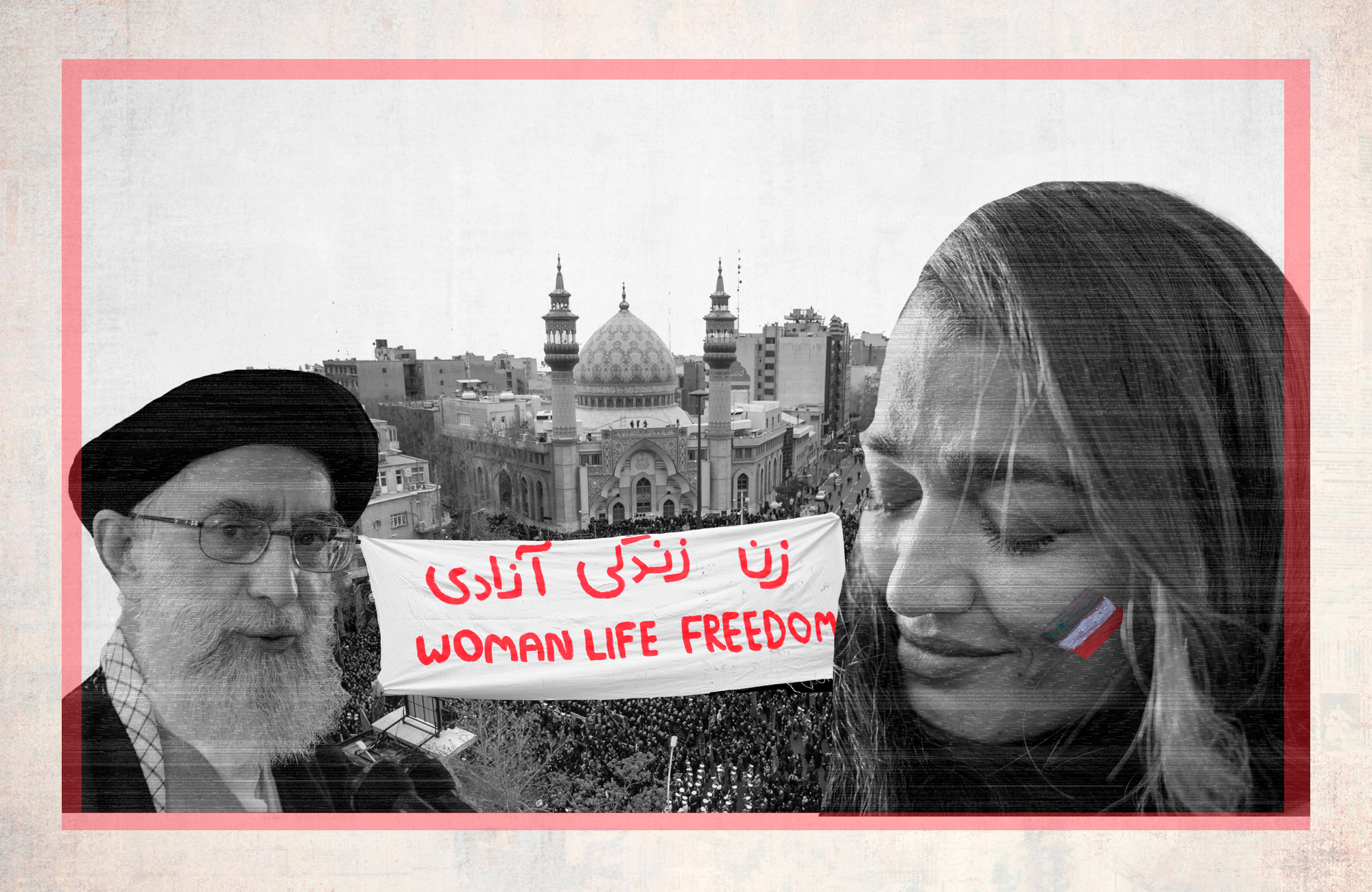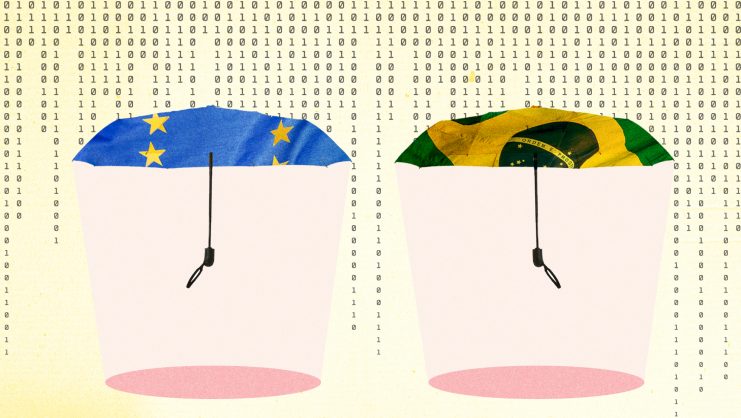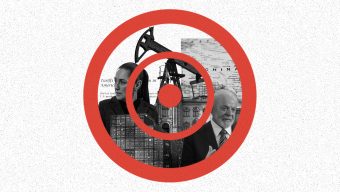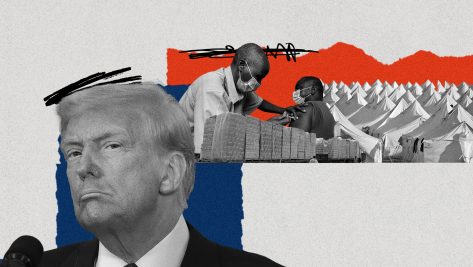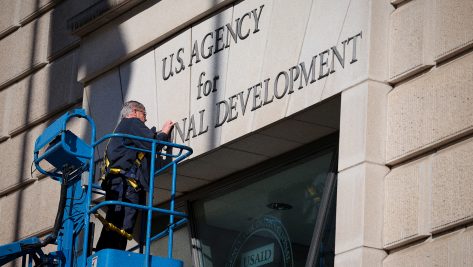As we all know, the death of a 22-year-old Kurdish Iranian woman, Mahsa Amini, in mid September 2022 following her detention by the morality police in Tehran has sparked uprisings across Iran, including in ethnic minority (non-Persian) provinces such as Balochistan, Kurdistan, as well as in most of the country’s main cities. Three months on, the revolt shows no sign of abating despite repression and killings. But, is this indeed a revolution? Or is it a revolt that may or may not turn into one? And if it were to become a revolution, what might the future hold?
The phenomenon of the uprising
The salient feature of the uprisings that have become a revolt is that they are led by young women, joined by young men and school students. It is a “Generation Z revolt” but it affects far more than just that generation. What Iran’s Generation Z wants is very simple: freedom. Freedom to choose. Freedom for Iranian women to behave, dress, act, walk, and talk as equals to Iranian men. Yet, while the revolt is about ending patriarchy and the repression of women, it is also about rights in the broadest sense of the term.
The best way to understand what is happening and what the protesters want is to listen to the song “Baraye” (“For”), which according to the analyst Karim Sajjadpour of the Carnegie Institute, encapsulates the wave of feeling that has led to the uprisings. In the song, Shervin Hajipour names the young women who have died and sings lyrics such as, “For dancing in the streets, for kissing loved ones” and “for women, life, freedom” (zan, zendegi, azadi) which has become the catchphrase of the revolt. Hajipour was arrested less than 48 hours after posting his song online (and was later released) and although he was forced to remove it from Instagram, the song was already out in the world and the chant zan, zendegi, azadi is now synonymous with the wave of protests following Amini’s death. The song lists the things for (or against) which one might take to the streets:
- for being scared while kissing someone
- for shame at having no money
- for the child trash-picker and his dreams
- for the polluted air
- for the Persian cheetah and its probable extinction
- for the dogs that have been outlawed (dogs are considered unclean but everyone seems to have one),
- for the vapid slogans, for the buildings that have collapsed (a reference to repeated disasters caused by corrupt building practices). And so on, until the final refrain, “for freedom, for freedom…”
In other words, it is a list that summarizes the causes of widespread anger and misery, which came together as a tipping point following Ms. Amini’s death after the regime engaged in a concerted crackdown on alleged anti-Islamic activity.
The hijab as political symbol
This revolt goes well beyond women wearing or not wearing the headscarf (hijab), though the garment is highly significant within the revolt, not just for repression of women’s right to wear (or not wear) what they choose, but because it has long been a sign of the government’s power and construed as an instrument of patriarchy. The current women-led protests have made the hijab a symbol of a clashing vision of Iran’s future, but it is worth noting that it has long been highly politicized. The hijab is much more than just a veil.
In Iran, as elsewhere in the world, to understand the present, we must look to the past. The politicization of the veil as a symbol began not with the Islamic Republic’s law mandating it, but with a far earlier law under Reza Shah (the previous Shah’s father) prohibiting women from wearing it in public – as was done by the modernizer Ataturk in Turkey. That law was so unpopular in Iran that it lasted only a few years. None the less, it was enough to cement the hijab as a symbol not just of religious identity but also of battles over national identity.
Ironically, the veil requirements in the twenty first century may have helped set Iran on the path towards the current protests, in a rather unexpected way: by making conservative families more comfortable in allowing their daughters to go to university. All of a sudden, society – including educational institutions – had become Islamic and it was regarded as safe for their daughters to leave home and go away to college. Education thus opened new opportunities for women to enter public life, within an inherently patriarchal system. That, in turn, led many women to become dissatisfied with the limitations that they found there, such as rules that barred women from holding senior judgeships – and that dissatisfaction came from conservative Iranian women, often daughters of the clergy.
Where do we stand today?
Since mid-September, when Ms. Amini was killed, women and student protesters have been joined by famous Iranian actors and actresses, athletes, artists, academics, and members of Iran’s Bar Association, who have declared their support for the protestors. At the World Cup in Qatar, the Iranian team, as a protest, did not sing during the Iranian national anthem and many Iranians in the crowd were even booing it. But, even more crucially, important new groups in the country have been joining, or at least supporting, the protests: the bazaar, petrochemical plants, and trade unions went on strike in their support in November 2022. This is significant because hitherto these groups have been important pillars for the regime.
The government has neither acknowledged nor seems to understand the roots of the women’s revolution and the deep discontent of the people.
This is therefore a critical development, as it was the power of the merchants and the bazaar, especially Tehran’s Grand Bazaar, part of which saw closures in the third week of October, which has previously been instrumental in supporting movements for political change and revolution. In the first week of December, Iranian shopkeepers and lorry drivers staged a walkout in nearly 40 cities and towns after calls for a three-day nationwide general strike from protesters when the government declined to confirm a claim by a senior official that the morality police had been abolished.
The significance of this needs to be contextualized by once again looking at the example of the past. The bazaaris of Tabriz and Isfahan who took part in the 1905-1911 Constitutional Revolution became local legends and many Tehran bazaaris supported Prime Minister Mohammad Mossadegh in his attempt from 1951 to 1953 to nationalize the production of Iranian oil away from foreign control. However, the merchant and shopkeeper class have close relations with the clergy and in general have been supporters of the regime.
Iran is no stranger to uprisings. For example, in 2009, there was the uprising led by the Green Movement, and then again in 2018, 2019, and thereafter over price rises, corruption, economic and water issues. Always the regime has instrumentalized those protesting with the claim that they are following foreign agendas. However, it is absolutely clear that whatever the regime may say now, the protests are not about resistance to America, Zionism, Israel. It is about freedom and rights. The tropes of the past, particularly those of the 1979 revolution, no longer apply.
As Haleh Esfandiari of the Wilson Center put it, the regime either understands but doesn’t care, or simply doesn’t understand the aspirations, grievances, frustrations of the younger generation and sees only the threat they pose to its repressive autocracy and its outdated, even medieval social norms that it wants to impose on them. In Dr. Esfandiari’s view, “The genie is out of the bottle.”
The government has neither acknowledged nor seems to understand the roots of the women’s revolution and the deep discontent of the people. When Iran’s Supreme Leader, Ayatollah Khamenei, after a two-week silence, finally addressed the turmoil on the streets, it was not to calm the protests or to bridge the anger of the people against an unrepresentative, repressive government. Rather, he condemned the demonstrations as the work of Israel and the US and their paid agents in Iran. It is an old ploy that no one believes.
Why now and what next?
Why has the death of Ms. Amini, tragic though it is, and those of the young women and young men since, sparked off an uprising when other previous deaths during protests did not have the same society-wide consequences? How do these uprisings differ from this of the past?
Numerous uprisings of the past two decades have expressed discontent about water shortages and mismanagement, environmental issues, about corruption, petrol prices, about the effect of years of sanctions, which have seen people’s purchasing power and lifestyles plummet, with increasing poverty rates and an increasing sense of despair. The discontent has been over the repression against journalists, academics, and dual nationals who are often used as pawns and bargaining chips in international relations, and about wanting to put an end to Iranians being treated as global pariahs because of the actions of the regime. The current protests are much, much more than anger over a tragic, scandalous death and those that followed it. It is the coming together of a perfect storm. People have quite simply had enough. The women-led protests have galvanized a broad swath of Iranian society to rise up in one of the most significant political movements that the Islamic Republic has seen since its founding in 1979.
Ms. Amini’s death was the spark for the protests. But the tinder that turned them into a conflagration was a series of changes that has been playing out for decades in Iran, leaving the hardline government increasingly out of step with the demands of the population.
To understand how the current uprisings and revolts – not yet a revolution, though that may yet come – might play out, one needs to look at the 1979 revolution which ousted the Shah and brought the clerics to power. For the regime, the key issue revolves around not doing what the Shah did; and fear of what happened in the fall of the USSR.
The regime’s first fear: avoiding what the Shah did
In November 1978, 24 years ago, after months of ever-growing protests and strikes targeting his despotic rule, the Shah of Iran desperately tried to appease the public in a televised broadcast in which he acknowledged past mistakes and promised to amend his ways. Rather than save his rule, however, that was the moment, according to the narrative of the revolutionaries, that the Shah sealed his own demise.
In consequence, what the Shah did in 1978 is what the leaders of the Islamic Republic of Iran refuse to do today as Iranians continue to express outrage at the deaths of Mahsa Amini and other courageous young women and children since mid-September. For Ayatollah Ali Khamenei, the country’s supreme leader, who more than anyone will determine how this will end, the hatred he exudes for the Shah is indivisible from his contempt for the tactical errors that the monarchy committed in its final phase and his determination to avoid them. Because they think the Shah’s irresolution and his attempt to meet protesters halfway was his most decisive mistake, the hardline rulers of Tehran have, for more than 40 years, ruled by the maxim of never giving an inch — lest the entire revolutionary regime fall. Furthermore, they have created a repressive instrument in the Iranian Revolutionary Guard (IRGC), an economic and militarily powerful entity whose loyalty is entirely focused on ensuring the survival of the 1979 revolution, along the lines of the “comitatus” principle of ancient Rome and Ancient Persia. Their loyalty is to the revolution and to the role of the Supreme Leader, rather than to a person as such. The Revolutionary Guards — the backbone of the regime and who are also the country’s most powerful military force — have become so deeply woven into Iran’s economy and power structure that they have everything to lose if the system falls. So, essentially, what they care about most is preserving the system.
The regime’s willingness to use brute force remains unshaken.
The irony of the lessons that Iran’s current leaders drew from the Shah’s perceived softness is that by preventing reform, narrowing Iran’s political spectrum, and imprisoning dissenters, the Islamic Republic has ensured that Iranians have no faith in reform and have no choice but to ask for much more: the end of clerical rule. In other words, a revolution.
However, despite the inspiring courage of the protesters, there are few signs that they will in the immediate future succeed in overthrowing the regime, other than through sheer sticking power. This is not to say that the perseverance of the protesters and the fact that they are now joined by those whose actions affect the regime’s (and the IRGC’s) economy may not eventually tip the balance.
The difficulty is that the current movement is without a name and without a leader. It is also diverse and adaptable. These are its strengths. Yet there is no organized “opposition”, and no manifesto. And it has harnessed a vast and hitherto underexploited resource – the latent dissatisfaction of women at their second-class status – and turned it into a huge asset. Nonetheless, in the face of this, the regime’s willingness to use brute force remains unshaken. For example, the IRGC’s hardline basij force is reportedly being deployed to quell uprisings, including in Iran’s second largest province Balochistan, where ethnic Persians are a minority, which in common with the Pakistani province of Balochistan also has separatist Sunni militant groups that have cited discrimination and socioeconomic conditions as key grievances for their opposition to Tehran.
While there has been strong international coverage of the protests’ feminist character, the unrest that has unfolded across Iran is much more diverse than this image suggests. The majority of casualties have come in the Baloch region of the south-east and the Kurdish north-west. In Baloch areas, there are fewer female protesters; this is a rebellion by pious Sunni men against a Shia state that discriminates against them and regards them as a potential fifth column for Sunni extremism. In the Kurdish region, the protests are an extension of the Kurds’ long and fruitless campaign for cultural rights and autonomy, if not outright independence. And now, with the increasingly military nature of the state’s crackdown, the movement in Kurdish towns such as Bukan and Javanrud feels increasingly like an insurrection, with barricades erected by protesters and the Revolutionary Guards shooting dozens dead.
Furthermore, some Iranians express the fear that, should it fall, the country will disintegrate under pressure from ethnic separatism or become a failed state – i.e., the “Syria effect”, which both the regime and a number of those who do not support it, fear. Regime officials are warning of separatism and referring to the country’s indivisible unity with growing frequency. It is this fear that the authorities are now playing on, with the pro-government media calling the nationwide protests a “political plot” ignited by separatist groups who want to split Iran. If there is one thing the regime and many of its critics agree on, it is the imperative of keeping the country whole.
Nonetheless, this time, it is the fearlessness of Iran’s youth that may eventually overcome the brutality of the regime. If so, the Iranian people will then face the challenge of ensuring that the collapse of the government paves the way toward a democratic future. Three months on, the disconnect remains between the people and the regime, as evinced by the Iranian football team bravely not singing the national anthem, despite the dire consequences that could ensue.
The regime’s second fear: going the way of the USSR
The regime’s fear of historical example also relates to the so-called “Colour Revolutions” that eventually led to the overthrow of the Soviet Union, and how these non-violent protests overthrew autocratic regimes in three post-soviet republics: the Georgian Rose Revolution (2003), the Ukrainian Orange Revolution (2004), and the Kyrgyzstani Tulip Revolution (2005). They fear that if the protests and demonstrations are allowed to continue unhindered, they will spread and grow until they overwhelm the regime. In Iran today, two groups of protesters in particular represent a nightmare for the regime – women and students – and both of these are now out in the streets, hence the violent repression being witnessed in a vicious attack on students at Sharif University in Tehran in early October.
If revolt becomes revolution, what might happen?
First, historical precedent shows that more often than not, revolutions fail to lead to a democratic future. In 1979, the Iranian people overthrew a shah only to be stuck with an ayatollah. The Arab Spring in Egypt brought about a similar outcome. In Libya and Syria, the Arab uprisings created something even worse: failed states and civil war.
Which brings the question: how far has the Islamic Republic of Iran advanced along the road from solidity to collapse?
Like Iran in 2022, the Lebanese revolution of 2018 was leaderless, which its adherents saw as something positive, with a flat structure. However, it also meant that there was no one to deal with, to negotiate a power change, and the revolution has basically gone dormant despite the tragic state of Lebanon, the disaster of the Beirut port explosion in 2020, and the country’s dire economic predicament. Little in Lebanon has changed and what has changed has certainly not been for the better. In addition, historical example shows that revolutions have a way of changing course post hoc, for instance the three sequential Russian revolutions of 1905, and 1917, The Russian Revolution of 1905-1907, the February Bourgeois Democratic Revolution of 1917, and the Great October Socialist Revolution of 1917. There is also the French revolution of 1789, among others. So, what you see is not necessarily what you get.
If we have learned anything about Ayatollah Khamenei since he became Supreme Leader following the death of Ayatollah Khomeini in 1989, it is his readiness to use the sternest measures to defend a regime he helped set up. Isolation and sanctions have formed the character of the Islamic Republic and the state’s institutions are on perpetual high alert, with its commanders and scientists not infrequently assassinated.
The Supreme Leader observes all this from his bunker. And when he speaks, he weighs his words, which a sizeable number of Iranians continue to believe are close to the words of God and gives a sense of what will come. During a round of unrest in 2009, Khamenei warned protesters to get off the streets or face the consequences—an ultimatum that signaled an onslaught of arrests, atrocities, and show trials that stopped the agitation in its tracks. Over the past thirteen years, the protests that shook the streets in 2009 have periodically resurfaced. However, what marks this round of agitation is its longevity. Today, however, Generation Z and their supporters go on protesting, unaffected by Khamenei and the power he has unleashed.
But, Khamenei is old and in ill health. The worst thing for the regime would be for the supreme leader to become incapacitated or die. One day, it will happen and whoever will take over… his son? The current president? Someone we have barely heard of? Whomever it is, they will not necessarily have Khamenei’s authority. Indeed, there are rumors that the clerical establishment and the Revolutionary Guard have daggers drawn over tactics, over revenue, over ideology, and the system is being put to the test.
Which brings us to the question of whether the regime is in fact capable of fundamental change or real reform. If it is not, then the uprisings really could turn into a revolution. It is worth remembering that the two key factors, closely connected, in creating a successful revolution (such as in Tunisia under the Arab Spring), appear to be leadership and the existence or emergence of organization among the protesters. Spontaneous uprisings can draw huge crowds demanding change, produce dramatic pictures and make headlines across the world, but in the absence of strong organization and leadership, they eventually succumb to government repression.
To return, once again, to 1979, the protests and demonstrations that led to the 1979 revolution were highly organized and persisted for nearly a full year. Then, as now, millions of protesters were calling for change and went out into the streets across the country. Then too, widespread strikes in the oil industry, government ministries, and other sectors, in addition to bazaar shutdowns, disrupted day-to-day life and paralyzed the economy and government activity. We have seen some of this today but it has not yet developed into a mass movement.
A further factor in 1979 was that the clergy, led by Ayatollah Khomeini from exile in Iraq, was instrumental in organizing mass marches. Their followers distributed leaflets and cassette tapes to spread Khomeini’s statements. The mosques became foci for political organization, and the leading clerics in towns and cities used Friday sermons to arouse their congregations and spur them into opposition activities. This has not happened this time, at least not yet. It would appear unlikely that it will. But, as made clear in the Supreme Leader’s remarks and as seen by the regime’s actions, the government is determined, once again, to crush dissent with all the force it has at its disposal.
It is therefore simply too early to say how it will all end. The passage of time, the refusal of protesters to be quelled despite repression, the emergence of general strikes, may all mean that the regime’s days are numbered, particularly if there is an internal split within the establishment, such as a breakaway by the atesh (army) in support of the protesters or a rift within the IRGC that threatened the cohort of the Supreme Leader.
However, has the importance of a potential establishment split been superseded by the regime’s recent actions? Khamenei’s track record in putting actions behind words has recently been grimly illustrated by the executions of two young male protesters, which encapsulates the regime’s utter disdain for human rights (if any further proof were needed). Could this be a last-ditch attempt to suppress the uprisings? If so, what might come next? Given the outrage caused, and given that the general strike appears to be picking up momentum, are the revolts now really on the cusp of becoming a full-fledged revolution? Is the regime finally, fully losing the people?
If this indeed transforms into revolution, what comes next? The jury is still out and no one can say with certainty what will come even if the regime were to fall. As is the way with revolutions…
© IE Insights.



